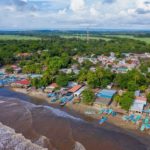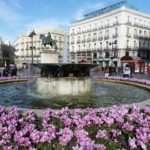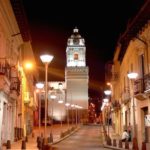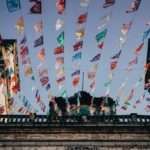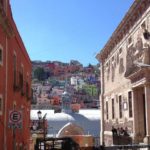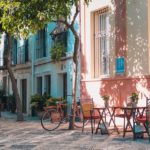A New Perspective on Death: Mexico’s Día de los Muertos
I came to Campeche, Mexico, a quiet state void of tourists on the west of the Yucatan peninsula, on a program through my university to study Spanish and discover more about the country and its people. From the moment I arrived in Mexico and began to hear about local traditions, one thing was for certain: I had better get super comfortable with the idea of death.
Like many things in Mexico, the centuries-old blending of indigenous and European Catholic beliefs makes for elaborate and rich traditions so very unique to this country during the holiday season of Día de los Muertos (Day of the Dead, November 1-2).
But in order to benefit and enjoy the celebrations and traditions, one must forget the North American mentality as seeing death as finality, something morbid that can only be spoken about solemnly and with sadness. In Mexico, the culture around death is completely different. It is merely another life stage, especially since many people carry the belief that their dead will visit them during Día de los muertos. This is even more likely if they treat their memory with respect, as well as their tomb.
One must forget the North American mentality as seeing death as finality, something morbid that can only be spoken about solemnly and with sadness.
I witnessed the ultimate example of this “care for the dead” on a field trip with a teacher to Pomuch, a small village north of Campeche. It is known internationally for its unique traditions and can by accessed by conbi (small private bus) from the town of San Francisco de Campeche.
The town is unique for the way it prepares for Dia de los muertos: by taking out the bones of their dead family members’ tombs and cleaning them every year, before carefully replacing and arranging them back in their boxes. When I first heard about this concept, it was truly unimaginable to me. But sure enough, as we strolled through the quiet, colourful cemetery on a hot day in October, we saw the human skulls peeking out at us from their carefully prepared resting spots. Many had their original hair put back on their skulls as well.
During the actual weekend of Dia de los muertos, a friend and I were in Chiapas, a southern state home to a town called San Cristobal de las Casas, nestled in the mountains high above the jungle. Its location makes for an agreeable climate, cooler than the rest of southern Mexico and ideal for travelling and exploring, with warm days and cool nights.
Clearly, the northern influence of Halloween mixed with Día de los muertos is an opportunity for celebration that children can’t pass up.
It has a very big backpacker and foreign presence, while at the same time maintaining a very traditional feeling thanks to its surrounding indigenous pueblos (villages), artisanal and food markets, and stores filled with chocolate, coffee (the best in the world), and artisanal crafts. Chiapas has a powerful history of indigenous resistance that is evident in a trip outside the city to any smaller villages, which many hostels and hotels offer.
San Cristobal de las Casas is most easily accessed by first class bus companies ADO or OCC than run affordable, comfortable, and safe bus trips across the country. We stayed in an incredible hostel called Puerta Vieja which offers an incredible free breakfast, an awesome social atmosphere, comfy beds and all-female dorms.
Our first night there was Halloween. Just as I was feeling a little bit down about missing the celebrations back home in Canada, costumed children did interrupt our dinner (a welcome interruption) by going door to door on the main streets of the city singing a song asking for sweets. Many shop owners had bowls of candy ready for the occasion, and we bought some to give out too. Unlike in Canada though, we saw kids doing this three days in a row! Clearly, the northern influence of Halloween mixed with Día de los muertos is an opportunity for celebration that children can’t pass up.
Check out Pink Pangea’s Writing, Yoga, and Meditation Retreats.
On November first, we visited the cemetery in town. All along the way there were vendors selling flowers and food to bring to the graves. The cemetery in San Cristobal is huge and really colourful, with many tombs the size of small houses. Many had received a fresh coat of paint that day. Around some tombs there were people playing music and families talking. Outside the cemetery there were vendors who had set up stalls selling sweets in the shape of skulls and caskets, as well as those made of seasonal fruits like pumpkin and squash.
Most of the celebration though, happens in the home in a more intimate setting. Families set up altars dedicated to their dead relatives. On them they put photos, candles, incense and food and items that the person appreciated when they were alive. Of course every family has a different tradition which also varies by region, but the “ritual” would be that families gather together and light the candles and pray, and then spend time eating, drinking and discussing their deceased relatives in order to keep their memory alive.
That weekend I saw some beautiful altars, costumes, food and vistas, and most importantly saw a whole new way of looking at life and death and everything in between.

